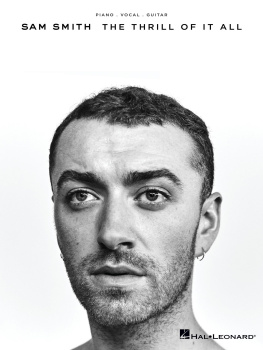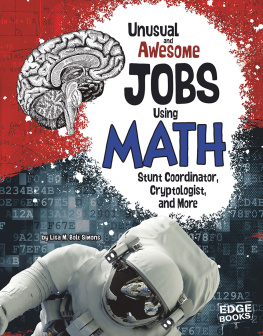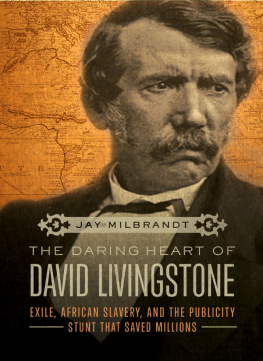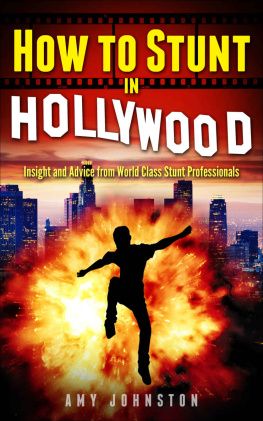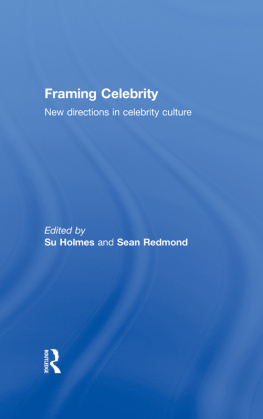Acknowledgments
Many people helped me to gather research materials for this book, and I would like to thank the staff at the Robert L. Parkinson Library and Research Center in Baraboo, Wisconsin; the National Fairgrounds Archive at the University of Sheffield; the Buffalo and Erie County Public Library; Tim Tindall and the Archives Reference Team at the Smithsonian National Air and Space Museum; the British Film Institute; the Indiana University Herman B. Wells Library; Jenny Romero at the Special Collections Department of the Margaret Herrick Library in Los Angeles; and Lutz Bacher.
Several portions of The Thrill Makers have appeared elsewhere in an earlier form. Parts of appeared in The Adventures of the Human Fly, 1830-1930, Early Popular Visual Culture 6, no. 1 (April 2008), and in Journal of Film and Video 56, no. 3 (Fall 2004) 2004 by the Board of Trustees of the University of Illinois. Used with permission of the University of Illinois Press.
Various colleagues and friends have inspired and encouraged this work. My interest in stunt work began after Dale Lawrence shared with me his appreiation for early Burt Reynolds movies. Bob Rehak, Barb Klinger, Jim Naremore, Richard Bauman, Paula Amad, and Chris Anderson were all crucial to the early stages of the project during my studies at Indiana University. Greg Waller offered guidance and friendship in the book's later stages. Matthew Solomon was a key advisor every step of the way, and I am profoundly grateful for all of his insight and friendship.
The transatlantic component of the book owes much to my time at the University of Nottingham, and thanks are due to colleagues there, especially Roberta Pearson, Paul Grainge, Mark Gallagher, Dave Murray, Peter Messent, Vivien Miller, Matthew Pethers, Tony Hutchison, and Ian Brookes. Vanessa Toulmin was extremely generous with her time and resources, and I learned much from the participants at conferences in Exeter and Sheffield. Michael Eaton kindly listened to some of my ideas and shared my enthusiasm for cat burglars. Northwestern colleagues have been supportive during the final stages of the book: Scott Curtis, Lynn Spigel, Jeff Sconce, Max Dawson, Jacqueline Stewart, Mimi White, Dave and Deb Tolchinsky, Eric Patrick, John Haas, Aldis Kaza, and Michele Yamada.
I am particularly grateful to everyone at the University of California Press, where it continues to be my great pleasure to be able to publish my work. Sharron Wood and Jacqueline Volin did much to polish the manuscript in its final stages. I could not ask for a better editor than Mary Francis, who guided this project with her usual grace and wisdom. I was given the gift of two readers' reports that were truly remarkable for their careful engagement and breadth of knowledge. Their suggestions did much to improve the book.
My family continues to make my work possible through their love and support. Freda has always played an essential role in my research, but it was a real pleasure to draw upon her insights as a writer in our mutual fascination with some of the colorful biographies I uncovered. The book, however, is dedicated to the two most important stuntmen in my life, Jonah and Henry, who have taught me more than all the research in the world.
TEXT
10/13 Sabon Open Type
DISPLAY
Sabon Open Type
COMPOSITOR
BookComp, Inc.
PRINTER AND BINDER
IBT Global
CHAPTER 1
The Adventures of the Bridge Jumper
On July 22, 1886, a figure was seen falling from near the center of the Brooklyn Bridge. The body was in the air for about three seconds as it traversed the 135 feet from the bridge to the water, and after striking the East River it disappeared from sight for nearly half a minute. A man was soon pulled from the water into a tugboat and brought to shore, where he was promptly arrested for attempted suicide. By the time the jumper, named Steve Brodie, emerged after a brief stint in a police court cell, he had become an instant celebrity. Brodie was shown newspaper illustrations of his jump and signed a contract to appear in dime museums across the country. Newspapers around the United States published accounts of Brodie's leap, and tourists were soon crowding into Brodie's New York saloon in order to catch a glimpse of him. Within a decade he was a traveling performer on the stage, serving drinks in a stage replica of his Bowery Street saloon and reenacting his famous jump from the bridge.
Brodie's career has much to tell us about the emergence of modern media celebrity and the kinds of spectacular stunt performances that could be mobilized to create it in the years just before the cinema. Bridge jumpers like Brodie took the modern urban landscape as their stage and in so doing reinterpreted the city and reinvented themselves. During the same years that stunt performers like Brodie were transforming the cityscape into a backdrop for their own entertainments, representations of the urban environment became attractions on the spectacular melodramatic stage. Brodie's jumps from both actual steel suspension bridges and stage representations of them collapsed distinctions between indoor and outdoor entertainment, just as the cinema would soon bring images of the world into theatrical spaces. Though I will argue that Brodie and the cast of stunt celebrities with whom he was associated point toward a distinctly cinematic entertainment and stardom, they also continued two older traditions: a workingmen's entertainment subculture whose center was the saloon, and a tradition of popular spectacle that took place along the canals, rivers, docks, and waterfalls that drove the commerce of nineteenth-century industrial mill towns and shipping ports. In regard to the latter, stunt jumping as a mode of American popular performance began earlier in the nineteenth century with another man who used dangerous stunts as a vehicle for a new kind of celebrity. We begin then, sixty years before Brodie's leap from the Brooklyn Bridge, at the construction site of a bridge that was being built thirty miles to the northwest of New York City.
THE ART OF THE JUMP
In 1827, a builder and sawmill owner named Timothy B. Crane was overseeing the completion of Forest Garden, an elite resort on the north bank of the Passaic Falls in Paterson, New Jersey. Paul E. Johnson describes the class tensions surrounding this project: Crane's Forest Garden was built on what had once been a public playground, and his upscale developments had aroused the anger of many of the working people of the area.
The geography of industrial labor provided the setting for Patch's jump and charged it with class tensions. Johnson reminds us that waterfalls like the one in Paterson were an integral part of the emerging American industrial economy: the falls were the engines that drove the factory mills where Patch was a mule spinner. Patch's leap was thus a kind of occupational skill, and class conflict continued to be a factor in his subsequent high-profile jumps: one was meant as an alternative to a private fireworks display at Crane's Forest Garden, and another coincided with a factory walkout.
In order to describe the subtleties of social meaning conveyed by the events at Passaic Falls, Johnson distinguishes between two types of artistry that were put on display there. Sam Patch stated in newspaper accounts that his act was an art that he had practiced from his youth. For Johnson, Patch's use of the term art is suggestive:
In Patch's world a man's art was his identity-defining skillthe whole range of combined mental and manual performances by means of which trained men provided for the wants and needs of their communities. The word art affirmed the intelligence, learning, and dexterity that went into building a house, making a shoe, or raising a field of wheat.[It] called up the yeoman-artisan republic and the ideals of manhood and individual worth that it sustainedideals that Sam Patch and other workingmen had reformulated and extended into the industrial world of the nineteenth century.
Next page

